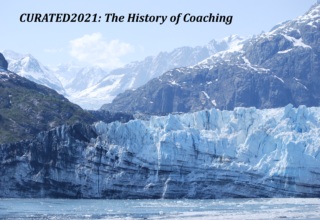
In 1911, in an attempt to trade on the legitimacy of science, Frederick Taylor (1964) devised a set of scientific principles for management. These principles provided a rationale for the assembly line, breaking complex processes into small tasks that can be performed repeatedly to increase productivity. Each task requires little or no skill so that workers can be replaced like cogs in a machine. This is clearly a function of a top-down hierarchical assignment of duties and expression of a mechanistic devaluation of the experience of the worker. Yet Taylor added to these “hard” results-oriented techniques the hope that science would promote the education and development of workers and better relations between workers and management. This “soft” side of management was supported in research by Elton Mayo (1933) that showed the importance of group cohesion and worker morale to productivity and that began the human relations school of management. Mayo promoted what he called a “nondirective interview” to allow employees to talk through workplace issues, a suggestion that has more than a passing similarity to organizational coaching today.
The subdiscipline of industrial/ organizational psychology developed to provide expertise in (soft) programs such as employee assistance in organizations, but also to suggest and administer (hard) assessments for hiring and promotions. Social psychological research conducted by Kurt Lewin (1947) and Muzafer Sherif and his colleagues (1961) questioned the efficacy of top-down, command-and-control, competitive management techniques. This combined with global democratization movements following World War II to bring the superiority of hierarchy into question.
This shift accompanied increased emphasis on leadership as a necessary quality in organizations. Current leadership theory (see, for example, Cashman, 200 I; Goleman, Boyatzis, & McKee, 2004; Sandstrom & Smith, 2008; Wheatley, J 992) reflects many of the shifts that have contributed to coaching: distribution of leadership; greater emphasis on relatedness, context, and community; systems thinking; belief in the capacity of groups to construct reality; encouragement of self-activity based on shared values and goals; bottom-up contributions to planning and decision-making; and appreciation of strengths and skills. The introduction of these ideas into organizational life during the second half of the 20’h century in North America came with a cost that has been chronicled by Art Kleiner (2008). The pioneers who proposed these ideas were treated as “heretics.” Yet what was then considered heretical has become orthodoxy in the world of organizational coaching. Chris Peterson (2006) characterizes today’s positive organizations as displaying purpose, safety, fairness, humanity, and dignity. The return on investment in this shift is supported by evidence from field theory (Lewin, 1975); social network theories (Freeman, 2004); family systems therapy (Kerr & Bowen, 1988); appreciative inquiry (Cooperrider & Whitney, 1999); and the human capital movement (Cameron, Dutton, & Quinn, 2003; Luthans, Youssef, & Avolio, 2007).
One former heresy was the suggestion that workers should have a voice in planning their work. Management’s former approach of ignoring bottom-up information and telling people what to do and how to do it is being replaced by leadership skills of listening to workers’ own ideas in order to promote engagement rather than hierarchy. Clearly, not all organizations have embraced this shift. Often, they experiment with flattening the hierarchy and allowing workers to make more decisions, only to return to a vertical structure in a crisis. One can hardly imagine a more “hard” demand for absolute control than when disaster is imminent or possible. Yet management researchers Karl Weick and Kathleen Sutcliffe (200 I) studied organizations with a high demand for reliability, such as nuclear power plants and aircraft carriers. They found that encouraging participation in decision-making by all concerned, whatever their formal position, was more effective in avoiding disaster than directing all activity from the uppermost tip of a hierarchical pyramid, however skilled or experienced the top personnel were. Jim Collins (2001) found that phenomenal business performance did not come from companies whose CEO was a flamboyant dictator. Instead, heads of companies that put the good of the organization first and knew how to build collaborative teams were more likely to lead their firms to greatness. It will be instructive to observe what kinds of management structures correlate with survival rates following the economic crisis of 2008 and 2009.
Download Article 1K Club

















